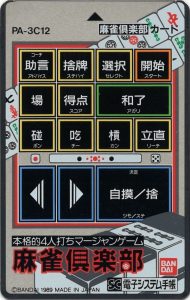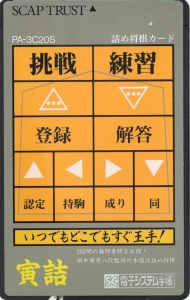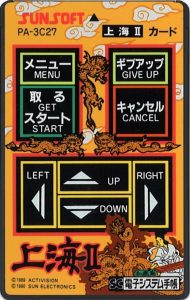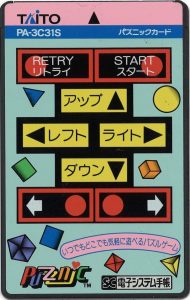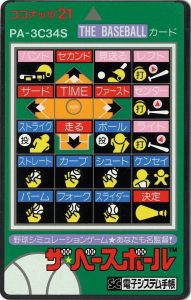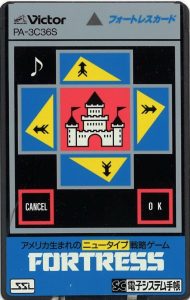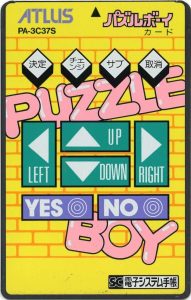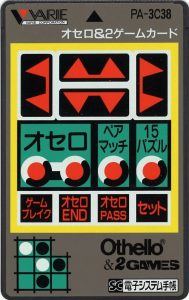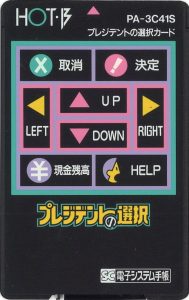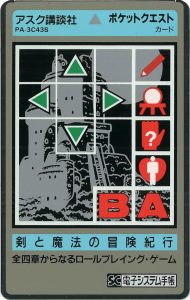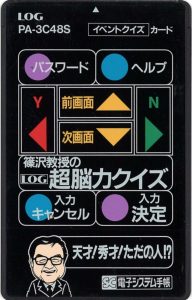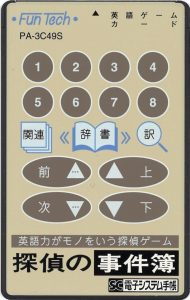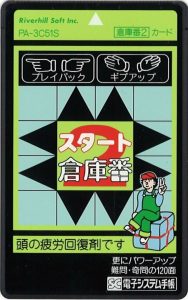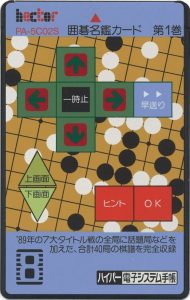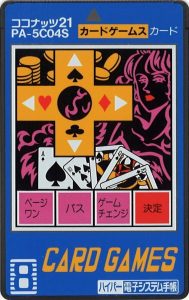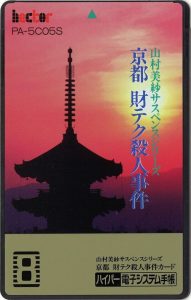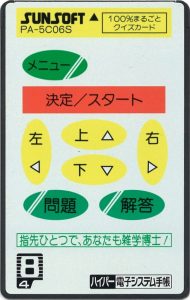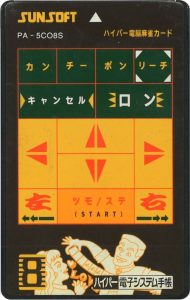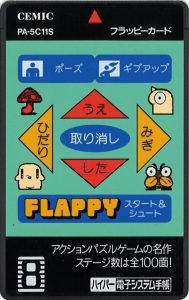|
History
The 1980s saw the rise of personal organizers. Casio where the first to enter the market with the PF-3000 in 1983. The device was extremely popular and sparked the interest of other company such as Sharp. For Sharp, which was already a leading brand in computers and calculators, it was only natural for Sharp to jump into this new market that combined two of their leading products. By 1985, Sharp had entered the market, but by that time Casio had already established themselves as the leader in this new field.
Release
But by 1987, things changed when Sharp release of the PA-7000. Initially released in Japan, the PA-7000 was a true revolution in the personal organizers market. It was the first personal organizers with the ability to display kanji which was a huge feature in Japan. It supported external program card (called IC Cards for Integrated Circuit Cards) which allowed to expand the capacity of the organizer. The card are inserted under a touch sensitive transparent plastic window that expanded the capabilities of the device even further by adding the ability to interact with the program using this touch screen. The trick was to print the control scheme directly on the card so, once inserted under the touch sensitive window, the printed controls would become actual button.
(Note: Sharp also release a PA-6xxx series around the same time, but this series doesn’t support IC cards so it will not be covered here)
The PA-7000 had a screen resolution of 96×32 and 16KB of RAM which could only display two lines of text. This limitation was quickly improved a year later with the release in October 1988 of the PA-8500 which featured a 96×64 screen and 32KB of RAM. The PA-8500 was a lot more expansive than the PA-7000 (¥28,000 vs ¥19,800), so Sharp released an upgraded version of the PA-7000 called the PA-7500. Released alongside the PA-8500, it shared the newest 96×32 screen, but lacked the upgraded RAM. The cost of ¥22,000 made it more affordable. With this, Sharp positioned the PA-7xxx series as the entry line while the PA-8xxx series was the top line.
In the same month, Sharp also decided to tackle the rest of the world with a release of the PA-7000 in the U.S., Canada and the UK. In the United States, the handheld would be called the OZ-7000 while in Canada and the United Kingdom, it would be dubbed the IQ-7000. The rest of Europe soon followed as well as Australia, all with the IQ-7000 model. The newer Japanese model of the PA-8xxx series also made their way out of Japan.
The IC cards were in Sharp mind, the biggest selling point and were excited to let 3rd party developers and publishers released their own IC cards. Sharp stated that they were convinced than more than a 1,000 different IC Cards would be released for the system. Sharp excitement was understandable. By March 1990, Sharp had sold more than 4 millions IC cards compatible organizers, an astonishing number when compared to the PC-98, one of Japan most popular PC that “only” sold 2 millions copy domestically by the same time frame. While this proved that the world was loving the new organizers line, the expectation for the IC cards were falling a bit short. In the same time frame, “only” 3 millions IC cards were sold. Although, this is still a big number, it still less than the number of devices sold which was a problem for Sharp. While Sharp was still making a fortune out of these devices, once a customer had purchased one, the only way to make more money was through the sells of IC cards, accessories or new hardware revision.
The IC Cards and the various accessories (such as printer, data link, etc) broaden the usage of the organizers to a true multi purpose device. But one genre of applications that had an unexpected success of the devices were games. By 1987, only a handful of handheld (pun intended) were released including the Microvision in 1979, the Select-a-Game in 1981, the Game Pocket Computer in 1984 or the Super Micro in 1984 as well. Each of theses had serious limitation either in production cost, size of the devices and/or serious design flaw that made them quickly fall into obscurity. With the IC Cards, the Sharp’s organizers became the first truly portable gaming system. The system was perfect for gaming on the go and, at the time, had next to no competition. That was until in 1989, the Game Boy was released. With a screen of 160×144, and price tag of ¥12,500 (substantially cheaper than the PA-7000), the Game Boy became an instant hit. The Game Boy also had a basic feature that was lacking from the Sharp’s organizers, the ability to play music. The Sharp’s organizers could only perform just a basic strident beeping sound.
Sharp even allowed other company to produce IC Cards compatible devices such as the Panasonic CI-P1.
Demise
While the demise of Sharp’s organizers line didn’t come until 1997, the release of the Game Boy truly killed any hope for Sharp to become predominant in the portable gaming market. In October 1990, Sharp did released a third line call the PA-9xxx series that features a 192×145 screen and 64KB of RAM at a cost of ¥48,000. While the new devices was now on par with the Game Boy from a screen perspective, the price tag truly set the tone for the future of the Share organizers line: it was a business tool. Each year after that, Sharp continue to release new models and increasing the prices to new high. The new PI line (dubbed the Zaurus) released in 1993 feature a massive 239×168 screen. The PI-8000, last of the PI series feature an widescreen of 319×168 pixel which made it incompatible with most of the IC Cards. For reference, the PI-8000 was selling for ¥80,000 which was not even the more expensive in this line. This honor goes to the PI-5000DA. Release in 1994, it costed ¥141,000. So while the dominance of Sharp in the personal organizers didn’t disappear quickly, it’s reign as a portable gaming system didn’t survive the new generation of gaming handheld that the GameBoy unleashed onto the world in 1989.
Games
While Sharp ambition to release more than a 1,000 IC cards where never achieved, more than a 100 IC cards where releases and among them where games. We didn’t find a complete list of all the software, so the list below could be incomplete.
The IC cards were released in many series. The IC cards bellow are part of the PA-3Cx series, which is the original line of third party software.
PA-3Cx series
The PA -3Cx series is the original line of third-party software, including games. 45 software were released as part of this series, including 19 games:
PA-5Cx series
The IC cards bellow are part of the PA-5Cx series, which is the line of third party software for the PA-9xxx handhelds line. 13 software were released as part of this series, including 11 games:
IQ series
The IC cards bellow are part of the international release. Outside Japan, only 6 games were released. Two of them (IQ-718M & IQ-8A01) were never release in Japan, while the IQ-719 – Organizer Tetris is a different version of Tetris than the one released in Japan.
PV-2Cx Series
The PV-2Cx series is a bit of a mystery. Only one software was made in this series and it’s a game.
 |
| PV-2C01(S) – Mahjong Club II ¥9,500 |
Compatibility
The compatibility requirements is provided as third party information only, as we didn’t test all the incompatibilities.
- 2 Software compatible with all IC-compatible models, but will display at ½ size on the screens of machines other than the PA-7000
- 4 Software compatible with all IC-compatible models except the PA-7000
- 42 Software compatible with all IC-compatible models, but display is compromised on the PA-7000
- 842 Software compatible with all IC-compatible models, but display is compromised when not used on a PA-9xxx models
- 84 Software compatible with all IC-compatible models except PA-7000, but display is compromised when not used on a PA-9xxx models
- 8 Software compatible with PA-9xxx models only
Japanese cards will not work in western organizers and vice versa.






